UPCOMING AUCTION SALES FOR MOTHER’S DAY GIFTING
Let a Fine Art Group Advisor assist you with finding the perfect gift for Mother’s Day.
The Fine Art Group team reviews art fairs and all major auction and dealer catalogues. We are positioned to be able to source the rare and unique, whether it be jewelry, fine art, wine, rare books or other decorative arts.

Freeman’s – Jewelry & Watches
Lot 159
Cartier
An eighteen-karat gold, turquoise, and cultured pearl bracelet, Cartier Inc.
rope twist design set with 5.4mm cultured pearls and turquoise beads with gold rope.
Length: 7 1/4 in.
Estimate: $6,000-$8,000
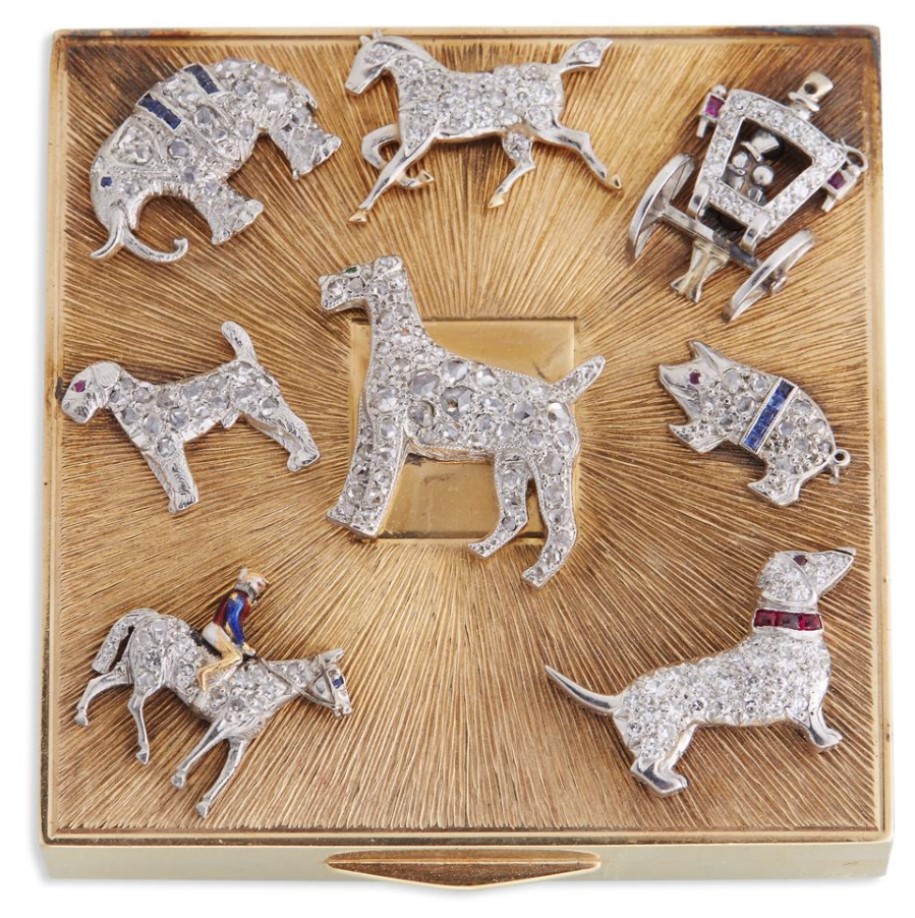
Freeman’s – Jewelry & Watches
Lot 29
A gold compact with eight platinum and diamond charms
square compact with textured gold and eight applied platinum and diamond charms designed as a carriage, scottie dogs, equestrian, and other animals.
52.8 dwt.
Length: 2 1/4 in.; Width: 2 1/8 in.
Estimate: $4,000-$6,000

Swann Auction – Contemporary Art
Sale 2509, Lot 177
Andy Warhol
Letter to the World (The Kick)
Color screenprint on Lenox Museum Board, 1986. 905×905 mm; 35 5/8×35 5/8 inches (sheet), full margins. Edition of 100. Signed and numbered 75/100 in pencil, verso (the two zeros effaced). With the Andy Warhol Art Authentication ink stamp and annotation “A126.066” in pencil, verso. Printed by Rupert Jasen Smith, New York. Published by Martha Graham Center of Contemporary Dance, Inc., New York. From Martha Graham. A very good impression with strong colors. Feldman 389.
Estimate: $25,000-$35,000

Swann’s Literature
Lot 121
F. Scott Fitzgerald
Tender is the Night
New York: Scribner’s, 1934. First Edition, first printing
Estimate: $3,000-$4,000
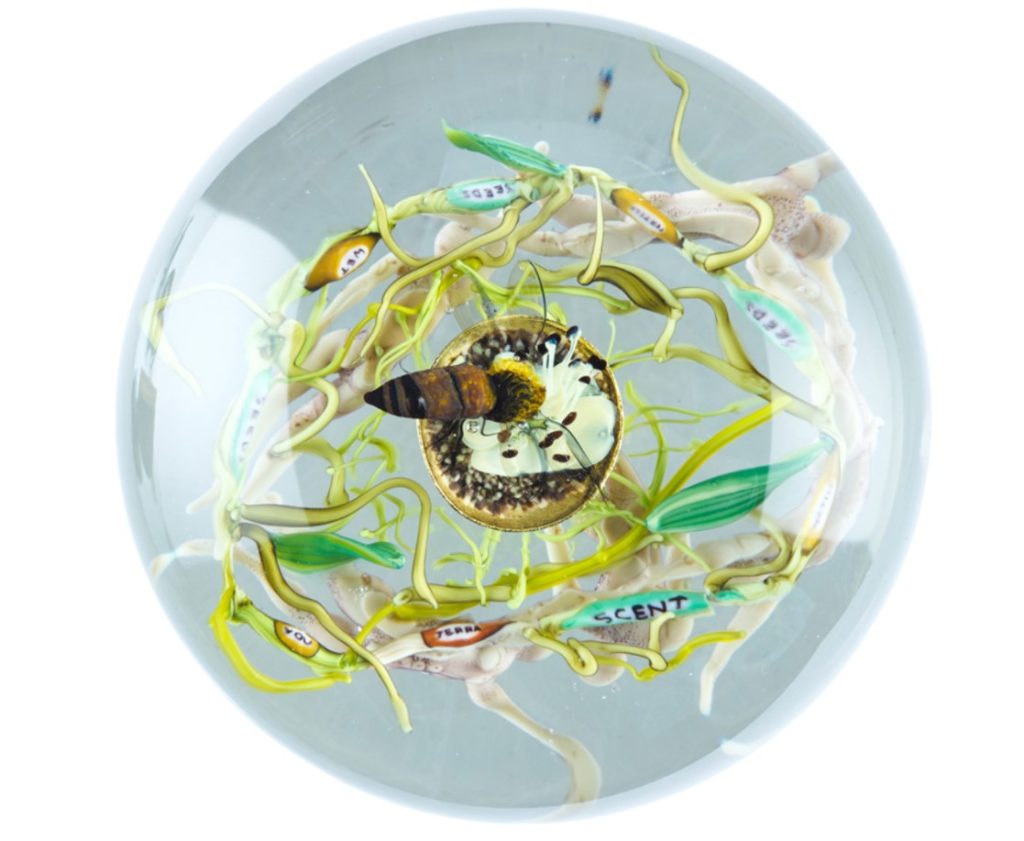
Rago’s Modern Ceramics and Glass
Lot 121
Paul Stankard
Paperweight with root people, bee, flower, and word canes
Millville, NJ
1995
Lampworked glass, polished clear glass
Etched signature, date/H16
Estimate: $1,000-$1,500
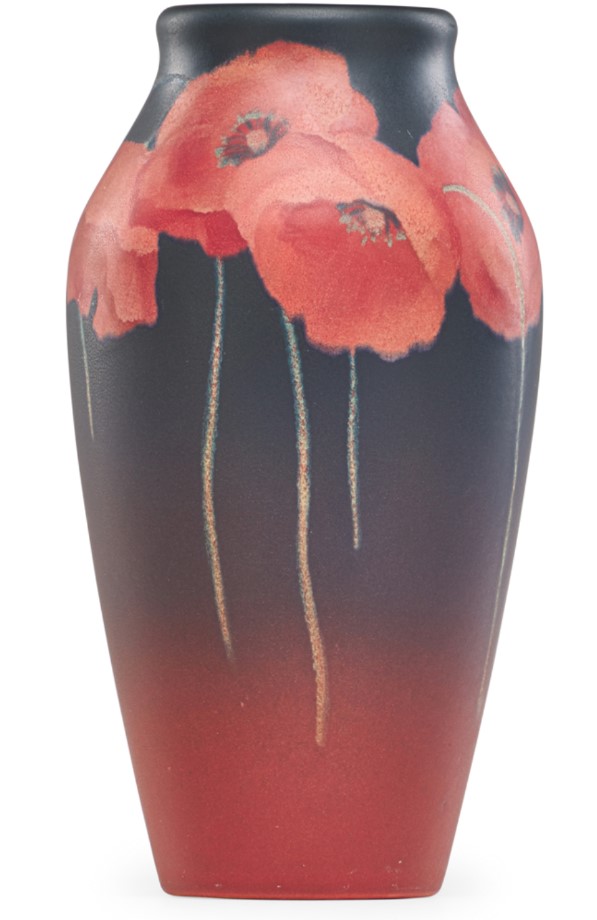
Rago’s Modern Ceramics and Glass
Lot 121
Harriot Wilcox for Rookwood
Exceptional Painted Mat vase with poppies (uncrazed), Cincinnati, OH, 1902 Flame mark/II/192CZ/H.E.W.10″ x 5 1/2″The companion piece to this vase is in the permanent collection of the Metropolitan Museum of Art, New York.
Estimate: $2,000-$3,000
ART AS COLLATERAL: SHIPPING & HANDLING
A young entrepreneurial collector working with The Fine Art Group’s advisory team to develop his contemporary art collection, was seeking a 2-year loan of $4 million against his collection. His long-term ambition is to found a private museum and display his collection to the public. However, with much of his capital invested in his expanding tech business, he was seeking to lever the capital reserved for his art acquisitions.
The Fine Art Group identified six contemporary artworks that were suitable collateral. Not only was the collateral spread across the collector’s international residences but it also included a delicate work on paper and a monumental sculpture. The Fine Art Group utilised the services of fine art shipper Gander & White to undertake collection, transport and storage of all artworks needed as collateral for funding of loan monies. Gander & White has a worldwide presence, with facilities in the UK, France and USA which enabled swift collection of collateral from the individual’s global residences. These works were packed and transported in bespoke crates crafted by Gander & White.

The pieces chosen as collateral varied in size, media, and complexity to transport. The large sculptural piece required a gantry to move. This work was successfully deinstalled by Gander & White and ultimately stored in one of the company’s state-of-the-art fine art facilities. These facilities contain environmentally-controlled private rooms ideal for storing such high-value works. The collateral also included a group of works on paper that required delicate and precise handling from beginning to end. These were transported to storage using a climate-controlled vehicle, where they were then placed in a secure and controlled environment. Both the collector and The Fine Art Group were confident that the artworks were in safe hands.
Oliver Howell, European Managing Director at Gander & White, said of this project: “We were pleased to support The Fine Art Group in this international operation. The Fine Art Group offers an important service to art collectors and investors alike and it was a pleasure to once again work with a company who share our commitment to offering the best service to our respective clients”.

The collector also wished to show his works in multiple international museums and The Fine Art Group was pleased to facilitate this request, with the support of Gander & White, who work extensively with institutions. The Fine Art Group’s in-house legal team put in place all the necessary legal framework with the museums and the collectors, including establishing complex security structures, negotiating loan documentation, liaising with the museums, and organising insurance and logistics on the collector’s behalf. Gander & White worked with other agents belonging to the international fine art shipping network ICEFAT to carry out the shipping and installation of works in museums in Australia, Singapore and the UK.
This enabled the collector to realise his personal ambition of having his works exhibited for the public in major retrospective exhibitions globally. He continues to build his collection with the Fine Art Group’s advisory team purchasing emerging artists on the primary market, as well as some established blue-chip artists.
“It is important to me that our partnered service providers uphold the high-quality client service that we offer our clients. Gander & White enabled The Fine Art Group to facilitate every one of our clients’ needs as efficiently and professionally as possible.” – Freya Stewart
To learn more about Gander and White/The Fine Art Group you can subscribe to their newsletter here.
A TANGIBLE ASSET FIDUCIARY PROTECTS COLLECTORS
It was 4:00 am in Houston when my cell phone made that annoying “ping” alerting me to an incoming email. From a dazed and former deep sleep, I reached for my phone and saw that an “advisor” had sent me a painting apparently for sale that he thought I would be interested in for our clients. It had all the trappings of a scary deal: a work of art that was too good to be sending on an email, a price that was too high and did not reflect the market, and a source that I knew was hoping to make some quick money. I deleted the message, as I do every time.
That little email that jolted me from my peaceful sleep got me to thinking about what I wanted to share in the talk I was giving that morning in Houston to a group of highly intelligent business men and women who were interested in buying and selling with intelligence.
Tangible Asset Fiduciary. The term does not exist in the dictionary and you won’t study it when you are becoming an appraiser and certainly not when you are learning the skills as an art advisor. Hundreds of clients look to The Fine Art Group to serve as their tangible asset fiduciary when they decide to monetize their collections. A tangible asset fiduciary is a “fire wall” between the client and the auction house, dealer or art advisor. As a representative of the seller, our client, we ensure that the sale process works and that the work of art is with the best venue and all the steps for a successful sale are being met. Honestly, it is a mistake to try to go it alone when you are selling at auction.
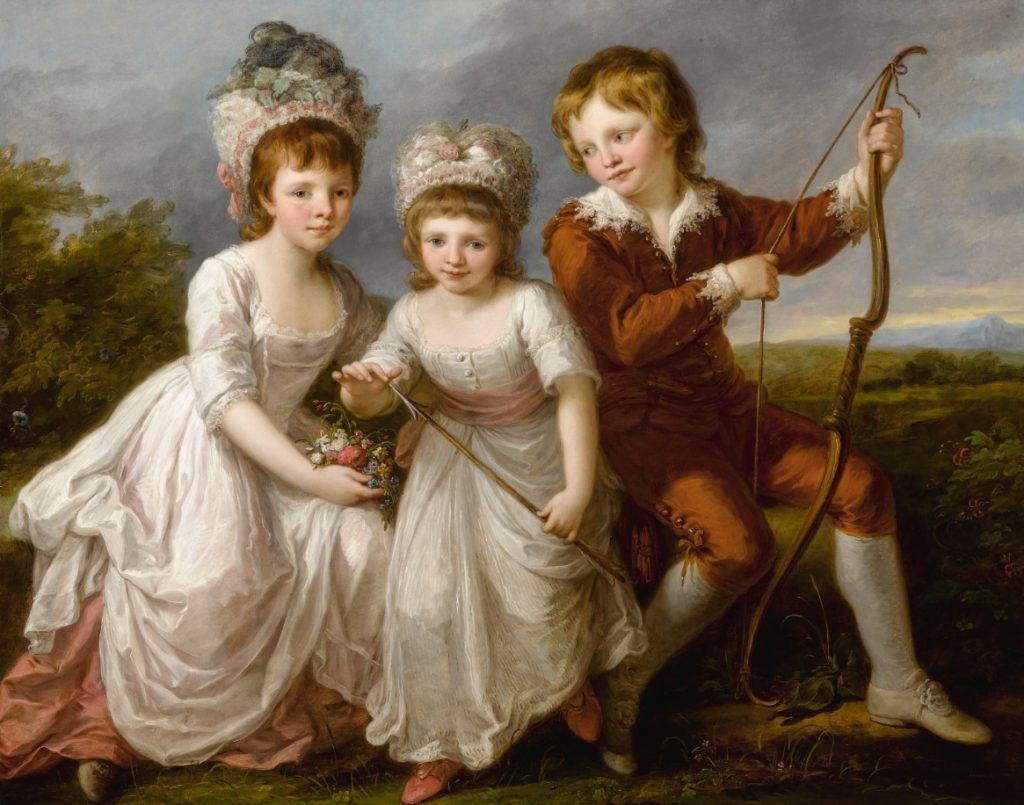
It is imperative that each of the following steps are taken to ensure a good result at auction.
1. Find the right auction house. Kerry Jeffrey, our Director of Consignments, clearly articulated this point in her article on finding the right venue. To find the correct venue our team looks at how many works of art by that artist the auction house has sold successfully in the past. For example, we are currently evaluating the best venue for a significant sporting artist. We want to see how many works have sold in the last four years for this artist at each of the venues we are exploring for sale.
2. Negotiate the terms. It is important to understand that the auction business is expense heavy. Auction houses need to insure the works while in storage, they need to produce expensive catalogues, they need to pay for expensive real estate and they need to pay their expert staff. Therefore, due to the high cost of doing business, they will try to look to the seller to absorb some of those costs. The auction house can charge for photography fees, insurance fees, storage fees, shipping fees, buy in fees, sellers commission, and marketing fees. However, all of these fees can be waived if the collection has value.
3. Understand the nature of the sale. Deciding on the correct auction houses and negotiating the fees is just the first step in ensuring a successful outcome in a sale. Now comes the important part of the negotiation. You do not want your piece to be in a sale which is already top heavy with your artist. In addition, you want to make sure your work is not the last of the five-other works by the same artist.
4. Negotiate the marketing of your collection. If your work is of high quality or value, you should ensure that the work is featured in press, in a predominant place in the catalogue and in the internal auction marketing campaigns. A high price achieved at auction happens if people are aware of your work of art. High exposure is essential.
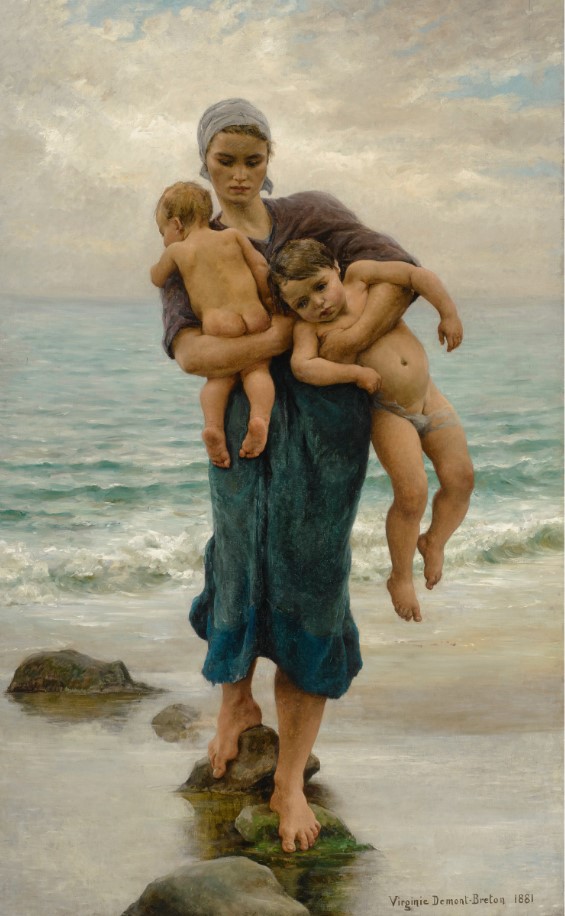
5. Estimates are the Secret Sauce to a Successful Sale. I know it seems illogical to place estimates that appear to be below the “value” of the work. However, in order for auctions to work you need a minimum of two people to want the work of art. Preferably you want 10 people who want your work and you want them to be bidding on line, standing in the auction room and calling on the phone. If you place lower estimates on the pieces, you have a much better chance at a higher return. The psychology of auction require emotion.
6. Don’t forget the guarantee. If you have a very significant work of art, you may benefit from an auction guarantee. It is not always in your financial interest, but it can provide you with a safety net.
7. Insure your collection when it is in transport. The biggest losses tend to occur when your art work leaves your house and is transported to the auction house. You want to ensure you have a true insurance value on the pieces so that in case of loss you are made whole again with a check that represents the value of the piece. Don’t trust the shippers to have appropriate insurance. If your artworks are currently with a “direct insurer” and you have valuable paintings, jewelry or collectables, consider working with a risk advisor who will place you with the best insurer for your needs. The Fine Art Group can help you find a professional insurance broker.

8. Reserves. The reserve is the lowest number in which you are willing to sell your work. The reserves are not known to the public but should be set as close to the sale date as possible. There is a lot of information that comes into the auction house very close to the sale which will provide insight into buyer interest in the piece. It is important that you make sure your reserve is low enough that an auctioneer has the ability to start low to get people excited about bidding on the piece.
9. Placement in the Auction Show Room. Make sure that when the exhibition is up for viewers of the sale, that your work is displayed in a dominant position in the sale room and has good light.
10. Avoid having the work of art go unsold. An unsold work of art is not good for its resale value. If you abide by the first 9 steps, you should have a successful sale and avoid getting the object back.
Don’t do it alone. Allow your tangible asset fiduciary to bring their expertise to the successful sale of your work of art or collection.
PART IV OF OUR SERIES: ARE YOU A TANGIBLE ASSET FIDUCIARY?
Baby boomers are the wealthiest generation in American history and they’re about to pass down their wealth over the next few decades. A portion of this wealth is in the form of tangible assets that reflect the passions, interests and legacies of the individuals and families who owned them. However, are the heirs interested in acquiring the art, jewelry, wine, furniture and other objects that their parents and grandparents have collected over the years?
Consumer tastes have changed and the younger generation may not be interested in acquiring their parents or grandparents’ treasures. So what can a family do with these objects?
Art and collectibles can have a tremendous amount of value so your client with these types of assets may consider using these items to further their philanthropic interests. Historically most people have donated cash to their favorite charities. Instead of writing checks, some clients may consider converting their tangible assets such as art, jewelry, wine and other valuable collectibles into a philanthropic opportunity. Using tangible assets in a strategic philanthropy initiative presents families with the chance to work collectively to create a unifying legacy.
What is tangible personal property or passion assets?
Tangible gifts of personal property are defined as personal property other than land or buildings. Items that are included in this category are vintage cars, jewelry, artwork, wine, memorabilia, rare books, furniture, stamp and coin collections, and other types of valuable personal objects.
If your client is contemplating a donation of tangible personal property to charity, it is important to be aware of the complex tax issues it can present, which will need to be carefully evaluated by a tax professional in order to maximize your client’s gift and the possible tax deduction.
Below are a few issues to consider:
- Has the client owned the donated object for at least one year?
- Will the donated object be used by the charity in its tax-exempt function (related use)?
- Has the Charity agreed to keep the object for at least three years?
- Is the client a collector or investor? If the client is an artist or dealer, consult a tax advisor to understand the different IRS tax allowable deductions.
- Has the client obtained a qualified appraisal for the donated object?
- What is Related Use?
According to the IRS tax code, in order for a donor of tangible personal property to be able to take full advantage of a tax benefit, the charity must use the object in a manner that is related to its exempt purpose. Examples would be a painting that is added to the collection of an art museum and a tall case clock created by a regional clock maker given to a historical society.
CASE STUDY #1
A client has owned a painting for the past 12 years that was originally purchased for $50,000. The client has three heirs of whom none are interested in the painting. The Fine Art Group recommended that the client approach an art museum that is very interested in accepting the painting as a donation. In addition, the painting has appreciated over time and has a current fair market value of $125,000. Since the art museum is planning to keep the painting, the donor should be able to deduct the full $125,000 value of the painting.
If the donor wants to give the same painting to an unrelated charitable organization, the client should consult with their tax advisor. The client may only be able to deduct the $50,000 cost basis. It is the donor’s responsibility to establish “related use,” so the donor should secure from the charity a letter stating the charity’s intent to use the property for a purpose related to its mission.
However a gift of artwork doesn’t necessarily have to be given to a museum to be considered for a related use. For example, gifts of artworks to a religious organization could be considered for a related use if the object would have religious and cultural significance. Similarly, gifts of artworks to a hospital may be for a related use if their display in common and patient rooms contributes to a healing environment.
When is an appraisal needed?
Contributions of art, jewelry, wine and other tangible assets worth more than $5,000 require the donor to obtain a qualified appraisal from a “qualified” appraiser. The qualified appraiser must be independent of the donor (the appraiser can’t be anyone related to the donor nor have been involved with a former sales transaction with the donor) For instance, if a client purchased a rare historical document from an auction house with the intent to eventually donate the item to a museum, then the donation appraisal can not be completed by the auction house where the object was purchased.
Once the appraisal is completed, the IRS Form 8283 must be completed and filed with the donor’s income tax return. This form includes a summary of the appraisal, signature of the appraiser, a signature of the charity and a statement from the appraiser that he/she is qualified to complete the valuation. Any item valued for fair market in excess of $50,000 is automatically referred to the Art Advisory Panel for review.
What are other philanthropic options for tangible assets?
Charitable giving has never only been motivated by tax deductions. Even without the full tax advantage, clients still consider donating to passionate causes by converting their valuable objects into liquidity for a cause they really believe in.
For example, a wine collector may want to sell 800 bottles of wine from the collection that had been assembled over three decades and allocate the proceeds to a charity that the collector supports.
CASE STUDY #2
Mr. and Mrs. Jones collected contemporary art, Tiffany lamps, rare books and antique coins. Their four children and the seven grandchildren were not interested in inheriting any of these items. However when Mrs. Jones fell ill, the multigenerational family wanted to create a legacy in her honor. The family decided to monetize the collections and create a scholarship fund in Mrs. Jones name at her alma mater. The family worked with a Tangible Asset Fiduciary, such as The Fine Art Group to negotiate the costs associated with monetization process and to determine the best venue for sale for each of the asset class.
There are many advantages that come with the use of a planned giving vehicle. Nevertheless, should a client decide to donate tangible objects to an institution, donor-advised fund, opportunity zone or foundation, a tax specialist should be consulted to determine the best option.
In conclusion, the field of strategic philanthropy is more sophisticated and complex than ever. More individuals are implementing a philanthropic strategy using collections of wine, art, jewelry and other tangible assets to help make a greater impact in the lives of others. Anyone that regularly writes checks to their favorite organizations and causes can develop a more strategic approach to giving by considering using tangible assets. Nonetheless, the philanthropic process involving these objects begins with understanding what your client owns and understanding the value.
OUR SERVICES
Whether you are an individual, family, foundation, or non-profit organization, The Fine Art Group can help make your charitable vision a reality.
THE FINE ART GROUP: LEADING ART FINANCE PROVIDER
With the acquisition of Falcon Fine Art’s art-secured loan book, The Fine Art Group further cements its position as a leading art finance provider. It marks the first significant consolidation of specialist art lenders in a maturing and growing art financing market.
“We are delighted with the acquisition of Falcon Fine Art. This inaugural art-financing business consolidation strengthens our long-term commitment to being the leading art finance provider to collectors and owners of high value art globally. This is an exciting time for our business as demand for our art financing product increases – we look forward to continuing to deliver the best art lending service to our clients.”
– Freya Stewart, CEO of The Fine Art Group’s Art Lending business
The Fine Art Group founded its art-secured lending practice three years ago to provide specialist art-secured financing to collectors and owners of high-quality art and jewelry, under the leadership of Freya Stewart. Having established a strong track record in the art lending space, with a commitment to provide financial solutions for a growing global client base, The Fine Art Group was the natural buyer for Falcon Fine Art.
Kamel Alzarka, the Chairman of Falcon Group, said: “This sale makes perfect sense, as we continue to focus on the growth and expansion of our core business, providing solutions for our large corporate clients.”
PART II OF OUR SERIES: ARE YOU A TANGIBLE ASSET FIDUCIARY?
Buying a piece of art may not necessarily be a wise investment – and that’s normally because of a lack of due diligence. It can mean the difference between a favorable return and waving goodbye to every dollar you spent on the piece.
due dil·i·gence
- Reasonable steps taken by a person in order to satisfy a legal requirement, especially in buying or selling something.
- A comprehensive appraisal of a business undertaken by a prospective buyer, especially to establish its assets and liabilities and evaluate its commercial potential.
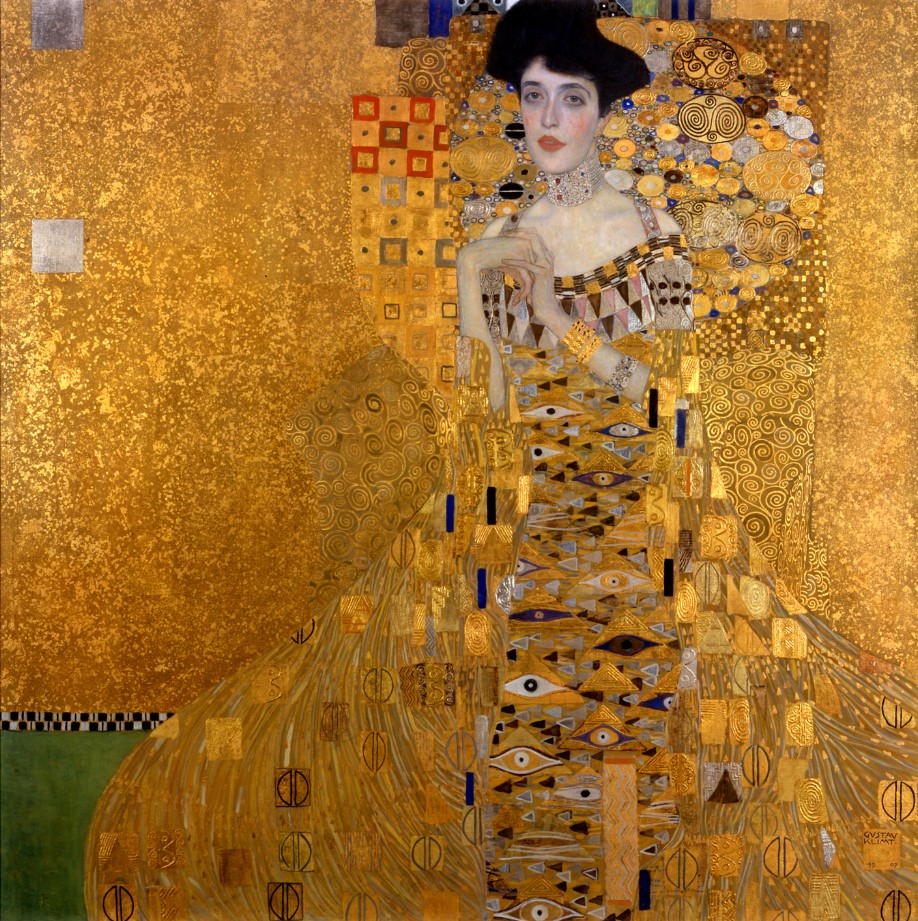
There are many aspects to consider when you are buying a piece of art that are summarized below:
Provenance and Title are first and foremost when it comes to purchasing a piece. One needs to take every precaution to check that a work was not forged, looted, stolen, promised to an institution or even fake. Opinions of authenticity are crucial to the art market— purchasers want to know they’re buying the genuine article and everyone benefits from weeding out fakes. Reputation is everything in the art world and its very foundations are shaken every time a fake work is presented.
Most works of art preceding the 1900s are recorded on the Art Loss Register, which is an International database that captures information about lost and stolen art and antiques. Most people in the art world refer to this database whenever buying a work of art to ascertain if the piece has previously been looted and offered up for sale without the prior owner’s knowledge. There have been many court cases involving works of art that were looted during World War II – these pieces came up in the art world many years later and the original owner of the work has the right to claim their possessions back in court.
Catalogue Raisonné is a comprehensive, annotated listing of all the known artworks by an artist either in a particular medium or all media. Most of the works would have a reference number by each work and listing of provenance, which helps people track a painting for authentication and ownership. However, sometimes the information is very old where the works have been sold or not recorded so there is a chance there can be gaps in a piece’s timeline due to lack of available research.
Antiquities is one of the trickiest areas to conduct due diligence. Provenance and title for these pieces can be misleading, as the work can be from hundreds of years ago where there were no records of authentication or ownership.
Many artists from the Impressionist and Post War era have foundations that receive hundreds of requests for confirmation of authenticity from galleries, auction houses and collectors. The authentication process can sometimes be a lengthy process, which must be considered.
So, once you have bought a piece of art, what can stop you receiving it?
SHIPPING DELAYS AND SEIZURES
When shipping reproductions of artworks such as antiquities. Customs can halt clearance, should they wish to see further documentation to prove that the work is, in fact, a reproduction and not the real work masquerading as a reproduction. If you cannot provide this, there is a chance that they will never release the piece to you without the relevant documentation.
MATERIALS USED
When buying a piece, the materials used must be considered. For example, there is a Damien Hirst painting consisting of paint and an array of butterflies. It’s important to know that when shipping the work to certain countries you would need to retain a list of the exact species the artist used. This is referred to as CITES, which is the Convention on International Trade in Endangered Species of Wild Fauna and Flora. It’s an international agreement between governments and its aim is to ensure that international trade in specimens of wild animals and plants does not threaten their survival. Customs will not clear the works of art unless they have this list.
BANNED MATERIALS
Materials such as ivory cannot be shipped in and out of specific countries. The US set up the UNESCO Treaty that protects the trafficking of cultural property. Ivory is a protected element, along with tortoiseshell. So, it’s important to check if a piece contains materials of this nature. In certain cases, sales are exempt from this ban, i.e. if the material was imported before the ban in 1989 and authenticated by a government-issued permit, or the material is older than a century.
A known example here is a Parisian client who bought a handbag from the Elizabeth Taylor auction in New York at Christies. The client was unable to have the work sent to her in Paris as it contained pieces of ivory. The client did not consider this before winning the bid and she lost her investment.
CULTURAL HERITAGE
Many countries have their own laws on cultural heritage. For example, a dealer in France was asked to sell an item of jewelry originating from Marie Antoinette. This sale never happened due to the item being part of France’s Cultural Heritage.
Purchasing a piece from Italy that’s more than 50 years old requires its own passport for shipping to another country. This is something to be aware of if one is in a rush to sell or buy a work.
DELIVERY OF INSTALLATION PIECES: PERMITS AND TRANSPORT
When buying a more complex work such as a sculpture or installation, many aspects must be considered regarding the size and fragility of the piece.
In some instances, if living in a property in busy cities such as Manhattan, you may have to apply for a permit to have it delivered, particularly if it needs to be lifted via crane to go in through a window. Traffic may be affected during delivery and this needs to be taken into account.
Transport is also incredibly important especially when shipping long distance. Every measure needs to be taken to ensure safe delivery without loss or damage. Be sure to use a trusted art transport company and installation company whenever possible. Whilst it may be costly, these experts are adept at maneuvering and positioning the piece correctly. This is particularly important when it comes to outdoor sculptures or moving it through narrow hallways and up and down stairs.
TAXES
Protect yourself from the shock of hefty additional charges by researching import and export taxes if shipping out of the US.
Also, be aware of State Taxes that may be applied to your purchase depending on where you live. For example, New York will have % State Sales Tax added to their final purchase price.
PROTECTING YOURSELF AND YOUR MONEY
Buying and selling at an auction house or through a reputable dealer and or advisor can be one of the best ways to protect yourself, as it’s common practice for them to do extensive due diligence on provenance and authenticity. These houses and dealers have tried and tested ways of investigating the history of a piece and maintaining their reputation for handling genuine items is essential for their business. Whilst there is no guarantee, it’s by far the best piece of mind to use these long-established businesses.
So, develop relationships with experts such as galleries, auction houses, and trusted advisors. Buying with confidence can be tricky in the art world but doing as much due diligence as possible should protect you and your investment. The older the work, the more difficult it can be to verify authenticity, so be sure to obtain legitimate paperwork whenever possible. Though it may not always be available to you, it’s the best way to ascertain the authenticity of a piece and will ensure a much easier future sale, should you wish to part with it.
Due diligence forms an essential part of any art purchase. Investigating and obtaining as much information as possible about the sellers and the artwork can protect collectors from making terrible investments.
It is recommended that a third party or independent entity such as The Fine Art Group should review purchases first to make sure all the i’s are dotted and t’s crossed. We wish you only shrewd investments and would be happy to answer any questions you may have regarding this article.
One of the essentials of being a tangible asset fiduciary as it relates to valuation is two part. One, is there a clear understanding of the value of the tangible assets? Two, is the value being applied to objects reflective of the strategies.
What is a Tangible Asset Fiduciary?
The word Fiduciary evolved out of the Latin Fidere, to trust. In order to truly act on behalf of a client’s interest trust needs to be the bedrock of the relationship. A tangible asset fiduciary has no “skin in the game”; the focus of our work is the valuable objects in a client’s collection. Our approach is independency and transparency. This essentially means that every action we take and every strategy we propose is directly in the best interest on the objects and the clients that own them. The client trusts us to represent them.
TOPIC #2: INDEPENDENCE AS THE FOUNDATION OF VALUATION
St. George’s Kermis With the Dance Around the Maypole” (1627), by Pieter Bruegel the Younger. Appraised by Sotheby’s for estate tax purposes in 2005 for $500,000; Sold at Sotheby’s in 2009 for $2.1 million.
When is an appraisal needed?
Whether it is for purchase, sale, estate planning, probate, divorce, rental lease back, fractional interest, insurance or donation, a correct appraisal is needed for any tangible asset. The methodology will directly reflect the overall goal of the valuation. Looking at one object as an example, you can track the different values depending on the purpose.
CASE STUDY
Mr. Smith has decided that he wants to acquire a Milton Avery painting from a gallery in New York City. He contacts The Fine Art Group to obtain a market analysis so that he can negotiate correctly with the gallery. The market analysis reveals that the work sold previously at auction for $200,000 in 2007. As the Milton Avery market has increased in value for the right subject matter and year, his Fine Art Group advisor recommends paying no more than $300,000 for the painting. He purchases the painting at $300,000.
Mr. Smith needs to add the painting to his insurance. As he purchased from a gallery in NYC, his insurance value will be the receipt from the gallery plus tax and shipping. The total cost with expenses was $330,000, which is the retail replacement value.
Mr. Smith decides he would like the portfolio value or estate planning value to begin strategizing with his financial advisor and accountant. The portfolio value is the fair market value. In the current auction market with premium, the Milton Avery would sell for $250,000. This is the value he can use for rental lease back, fractional interest, divorce, estate planning or donation.
Eventually Mr. Smith is interested in using the painting as collateral. The value most appropriate for collateral is marketable cash value which is the auction price minus fees. For the Milton Avery the MCV would be $200,000.
To summarize in this example:
The recommended purchase price was $300,000
The retail replacement value was $330,000
The fair market value price was $250,000
The marketable cash value was $200,000
When the values of the works of art are even more significant, this price differential can be very substantial.
Who does appraisals?
Independence is the key to accuracy.
Appraisals are done by auction houses, dealers, and appraisers. To be a tangible asset fiduciary, it is essential that the valuation should only be conducted by an appraisal firm. While a free-lance appraiser have the knowledge of the piece, frequently individual appraisers do not carry the appropriate liability insurance or insurance to cover damage to an important work of art. There is no licensing for appraisers, the only regulations we have are appraisal associations, including the Appraisers Association of America (AAA), International Society of Appraisers (ISA) and the American Society of Appraisers (ASA) as well as an exam known as Uniform Standards of Professional Appraisal Practice (USPAP). If an appraiser is not a member of at least one of these organizations and is USPAP compliant, he or she should not be conducting appraisals.
There is an inherent conflict when a valuation is conducted by the auction house that wants to sell your work or the dealer that either hopes to sell your work or substantiate a price that they used to sell you the work you purchased from them.
Auction houses often offer appraisals at discounted rates in order to gain access to material and provide additional services for clients. There are several issues with auction houses appraising, including inherent bias and their lack of knowledge on all the markets for objects. While Auction houses have a strong sense of the auction market, they often lack experience with the primary, retail market and with other values such as marketable cash value. If an auction houses wants to sell an object, or recently sold an object, they have a vetted interest in the value benefiting them. A recent court case found that Sotheby’s had valued a painting too low for estate tax in order to entice the estate to sell the painting with Sotheby’s. The painting did sell with Sotheby’s just months later at more than 3 times the estate appraisal value. “Judge Joseph H. Gale ruled instead that the expert had most likely placed a “lowball” estimate on that painting and a second work so as to “curry favor” with the owner, an estate facing a potentially large tax bill, and thus win the business of selling the works at auction.” It should be noted that the IRS art panel strictly follows USPAP and both state that an appraiser is prohibited from appraising an item if they have been involved in the sale of the item.
Similarly, dealers and galleries lack the knowledge and independence that appraisers have, often appraising works of art for substantially higher values than what the client paid. Yearly, complimentary appraisals by the dealers that sold works the works to the owner, often inflate values in order to prove to client’s that their purchase was a good investment. We see this regularly when reviewing insurance schedules that show a yearly increase in the value of the object with appraisals directly from the place of purchase.
Appraisals are a beneficial tool for financial planning, insurance and investment. However, in order to truly be a tangible asset fiduciary, the correct values must be determined by an independent appraisal firm.
Over the next five months, each of our executives – Anita Heriot, President, Roxanne Cohen, Director of Art Advisory, Kerry-Lee Jeffery, Director of Consignment, Colleen Boyle, Director of Sales, Kate Molets, Director of Appraisals – will focus on some of the ways we embrace independence, transparency and expertise to bring the best service to our clients. We will be exploring the importance of choosing the right auction house for the sale of our client’s objects, understanding appraisal values, art financing, Philanthropic strategy and acquisition due diligence as key components in working as a fiduciary on behalf of our clients and institutions.
WHAT IS A TANGIBLE ASSET FIDUCIARY?
The word Fiduciary evolved out of the Latin Fidere, to trust. In order to truly act on behalf of a client’s interest trust needs to be the bedrock of the relationship. A tangible asset fiduciary has no “skin in the game”; the focus of our work is the valuable objects in a client’s collection. Our approach is independency and transparency. This essentially means that every action we take and every strategy we propose is directly in the best interest on the objects and the clients that own them. The client trusts us to represent them.
TOPIC #1: CHOOSING THE RIGHT AUCTION HOUSE
When contracted with assisting a client with the sale of a single work of art, an entire collection, or other valuable objects; our responsibilities include making it an effortless and transparent process, negotiating all commissions and fees, facilitating all logistics and most importantly maximizing the return.
The initial step when first approached by a client who is looking to monetize a work is to determine the most appropriate method and market for sale. Certain works can and should be sold privately, while others would benefit from a more competitive market by being sold through specialized sale at auction. While most regional and national auction houses will have Fine Art Departments, only a select few will have specialized sales that target the right collectors for a particular work. These specialized sales include more thematic categories like the annual ‘Orientalist Sale’ at Sotheby’s in London or Copley Fine Art’s bi-annual ‘Sporting Sale’, or regional specializations such as Freeman’s bi-annual Pennsylvania Impressionists sale, or Leslie Hindman’s ‘Made in Chicago’ sale.
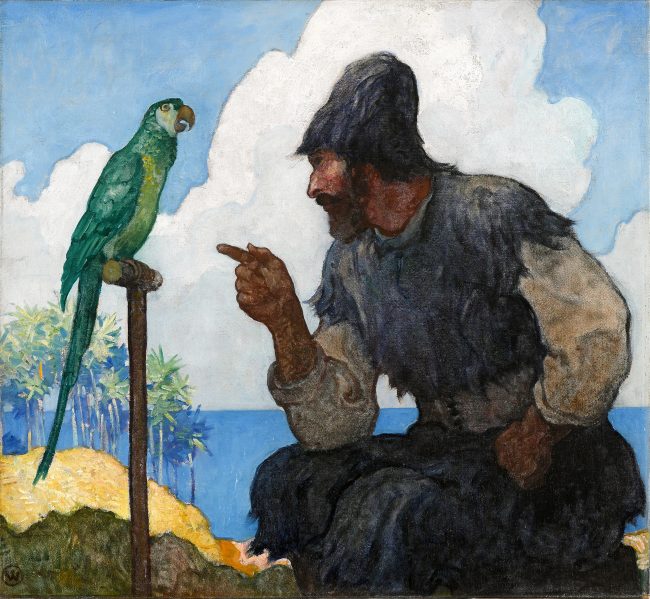
A further layer to this specialized approach is when a particular auction venue has cornered the market, so to speak, for a particular artist. A little known artist is Ida Rittenberg Kohlmeyer, a Louisiana based abstract artist who studied and was influenced by Hans Hoffmann. Kohlmeyer is predominately collected in the south, with 288 records at auction, 216 of those are split between two New Orleans based auction houses that also hold the record prices for the artist. Examining the sales records for this particular artist shows that the best results, save for one or two outliers, are when works have sold at one of those two venues. An even more compelling example is that of Boris Vallejo, a Peruvian born illustration artist, with 224 records at auction and a staggering 210 of those at Heritage Auction House! We recently assisted a client in Pennsylvania with an illustration work by Vallejo. The value was fairly modest and most may think special consideration need not apply. However, based on the results for Vallejo at Heritage, where there is a considerable interest for the artist’s work in their illustration sales, the work sold for ten times the estimate – and set a world record for the artist! This is a result that would not have been achieved had the work been sold in a more general paintings sale at a regional house.

We assisted a West Coast based client with the sale of a modern Chinese work by famed artist Xu Beihong. While works by this artist have sold in New York and London, the most successful results have always been achieved in Hong Kong. In this particular case, the work soared past its estimate of $400,000-$600,000. A result that would not necessarily have been achieved had the work been sold in the United States where the work had been consistently estimated for under $100,000.
We utilize this same thought process when assisting with all tangible assets; including furniture and decorative arts, collectibles and other asset areas. For example, there are certain auction houses that specialize in 20th Century design, and in some cases, build the secondary market for a particular craftsman. The curated nature of the sales and specific marketing introduce works that had formerly no secondary market and generate a higher sale price. Other houses have a regional focus, like Leslie Hindman’s ‘Made in Chicago’ or a very focused specialty like Rago’s Modern Ceramics and Glass sales. When looking at larger traditional collections with varied contents and value levels we look to see where the overall collection will be best served as a possible ‘single owner sale’, pulling out specific pieces to be sold in specialized venues. Keeping more of the collection together allows for lesser or more moderately valued property to be marketed and cataloged in a better venue and allows for more competitive terms. Once the right venue placement has been identified we negotiate to ensure all fees are minimized or eliminated altogether. Auction houses can present a laundry list of fees; including seller’s commission, buy-in fees, insurance, catalogue fees, registrar fees, photography fees, storage fees, shipping fees etc. Based on the value of the overall consignment, these fees are always negotiable. In some cases, for highly desirable works, we negotiate to have the auction house *pay* our client a percentage from the buyer’s commission.
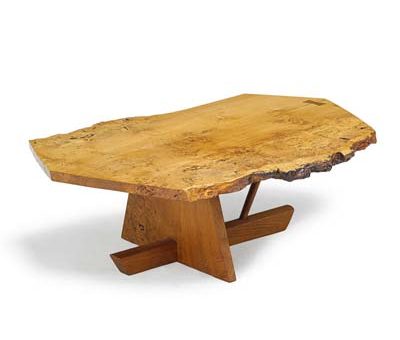
Another small, but very important aspect where we advocate on behalf of the client is in regards to marketing and catalogue placement. We need to ensure our client’s work is placed sequentially in the most advantageous place in the catalogue. I.e. if there are several works by the same artist or a very similar work, there is a strategy in place to which work comes first and last in the sequence as this can impact buyers’ spending. We would also work with the specialists to ensure other works are not consigned in for the same sale which would ‘compete’ directly with our clients’ work. We also work directly with the marketing departments to ensure our clients’ work or collection is given the utmost attention from a promotional standpoint, from basic advertisements, catalogue cover placement, signage, panels or lectures, cocktail events, traveling exhibits or luncheons.
The overall success of this bespoke service in placing works of art and other tangible assets in specialized sales is based ultimately on the fact that the auction venue has dedicated marketing and a focused clientele within reach for the specific work or item. Even with the full scope and reach of the internet and international bidding – choosing the right brick and mortar venue can be the difference between a work selling and a work selling well.
By Neil Kaplan, Esq., the Managing Partner of Cork Counsel, and Charles Curtis MW, the Founder of WineAlpha.
COLLECT WHAT YOU LOVE
Or understand what you collect. Collecting is about passion, and the most successful collectors have the understanding of their category that comes only with true love (or hire an expert)
GO DEEP
- Break the category into sub-genres, as what is true of Bordeaux wine is not necessarily true of Burgundy. Understand the multi-year trends for each wine type. Slavishly following trends can result in strategic errors.
- Example: Find the sleeper to maximize alpha (vintage port and sauternes are great categories to nab a bargain)
AVOID THE BUBBLE
Example: Right now Burgundy is trading at historic highs, and finding value is tricky. To do so, know which producers are popular (Domaine de la Romanée Conti), and where prices are rising (La Tâche) and where they are stagnant (the bottling from the Romanée Conti itself).
PROTECT VALUE BY PAYING ATTENTION TO PROVENANCE, CONDITION & RARITY
- As in any category, these three factors are essential to driving asset value.
- Example: there will be tens of thousands of cases of your typical first-growth Bordeaux produced and hundreds of cases of magnums, but only a few dozen to a few score of larger bottles such as double magnums (3 liters), jeroboams (5 liters) or imperials (6 liters)
AVOID THE UNICORN
While rarity is important, don’t overlook common sense. Certain wines such as Lafleur ’47 or magnums of Petrus ’29 are so rare that they are almost invariably counterfeit. To steer clear of problems, stick with wines that have a solid provenance and trading history.
PLAY THE ARBITRAGE
Wine is a global category. In order to get in at the right price, don’t overlook sourcing in London or Hong Kong. Typically London sales have the lowest prices, while the best property often comes up in Hong Kong (albeit at a premium).
PAY ATTENTION TO EXPENSES, BUT DON’T CUT CORNERS
It is essential to use temperature controlled shipping and storage and to insure wine end to end, but it is important not to over-pay for these services, or to pay too much tax. As with everything, the devil is in the details.
In order to combine their respective talents to provide you with the best services possible; Neil & Charles have formed a New York–based strategic alliance for the purpose of performing not only wine appraisals and providing consultancy services for wine collectors, but also inspections, relocations and brokerage of wine collections.
CHARLES CURTIS
Charles Curtis of WineAlpha has unparalleled qualifications. He is:
- A Master of Wine
- An Appraisers Association of America certified wine appraiser
- A published author
- A member of the board of the Institute of Masters of Wine.
With a certified wine and appraisal expert, you are guaranteed a wine appraisal that stands up to scrutiny. Charles has been called to testify in court proceedings regarding his wine appraisals, and none has ever been rejected.
Charles is also fully expert as a wine broker. He was for many years Head of Wine for Christie’s in both Asia and the Americas, during which tenure he acquired intimate knowledge of the collectible wine market. He continues to hone his expertise:
- Monitoring and documenting trade in fine and rare wine
- Remaining up to date on market conditions
- Identifying the most effective wines to sell at a given moment.
NEIL KAPLAN
Neil Kaplan of Cork Counsel will monitor each project to ensure that your particular needs are being fulfilled. Neil’s background makes him uniquely suited for this role. He:
- Practiced for six years as an attorney in New York City
- Has 25 years of sales and support experience in the wine and spirits industry
- Has advanced wine certification.
Moreover, Neil has learned and understands first and foremost that service and communication are the essence of any business. During all phases of each relationship, from the initial consultation through the final report, Neil is listening to your individual needs and objectives. He will:
- Design each deal accordingly
- Maintain effective communication
- Provide appropriate updates.
With Cork Counsel handling your personal, business and administrative needs and WineAlpha directing the wine appraisals and wine brokerage you can be confident of receiving expert and timely work, distinctive service, and an authoritative final product.
COMMISSIONING PET PORTRAITS AS AN ART COLLECTOR
You may not have noticed but there is a new staff member of staff at Pall Mall Art Advisors, Augie, our Springer Spaniel.

I never anticipated writing about a dog in our monthly correspondence, but Augie’s addition to my home and to our office has provided me with insight into how much we all love our pets. Certainly, artists have been portraying pets for kings, pharaohs, emperors and aristocrats throughout the history of painting. This renewed focus on our furry friends motivated me to gain greater knowledge into the techniques necessary when painting our pet.

Having seen the lively portrait of a terrier painted by Philadelphia artist Stephen Megargee, I was inspired to have him share a bit of his insight into the secret of painting a pet portrait.
Stephen Megargee comes from a long line of horse and dog painters. His ancestor S. Edwin Megargee was one of the official artists of The Kennel Club. So, it seems inevitable that Stephen would embrace that path.
Stephen pinpointed the key ingredients to a successful pet portrait:
- The artist needs to have mastered technique by practicing and perfecting. If the artist doesn’t have his 10,000 hours of practice, it will be evident in the work.
- Empathy and passion for the subject matter are essential. Many of the clients who commission a portrait of their pet have a strong emotional connection to the subject matter. It is essential that the artist himself empathizes with that connection and treats the subject matter with that level of respect.
- The painting needs to actually look like the pet. If it doesn’t, then the artist has not done his or her job. As Stephen said, “I don’t want my clients to think they are looking at a drawing of their dog, but the dog himself”.
Every portrait of a dog, cat or horse, loved by an owner, has its own story to tell. Stephen interviews the owner to find out why they are having a portrait painted and some of the key memories of their pet. This helps inspire Stephen. A good example would be the owner whose Dalmatian had passed away. All the owner had were two little snapshots of her beloved pet. Stephen decided to create a portrait that played on the two photos. The finished work became a painting within a painting. A true sign of success is the fact that many of Stephen’s clients cry when they see the final portraits of their pets.
As I welcome Augie, our Springer Spaniel, into our family, I can fully see the impact of these pets on our lives. More information on Stephen’s work can be seen on his website.